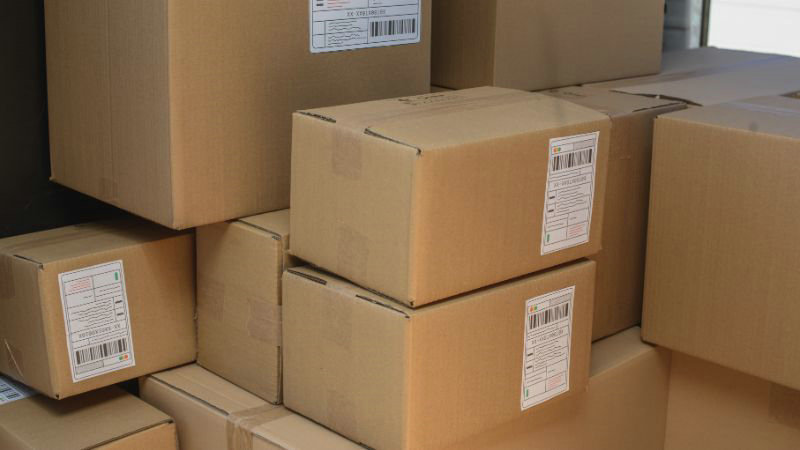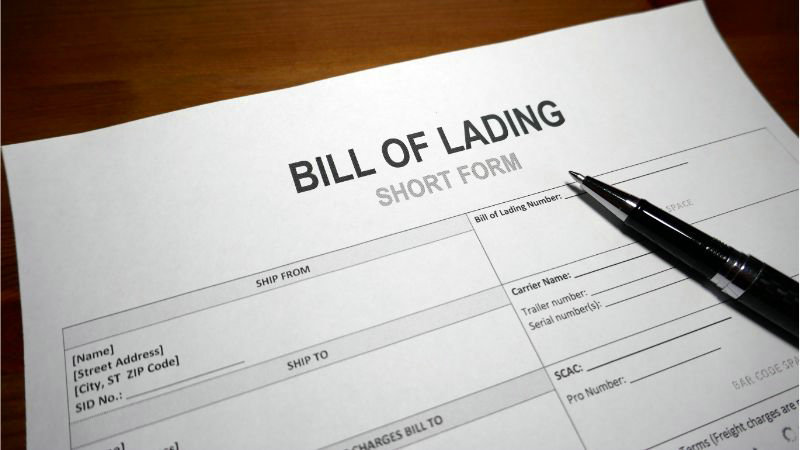
What is Blind Shipping
Blind shipping is a logistics practice that hides the identity and address of either the shipper, receiver, or both during the shipping process.
It’s commonly used in e-commerce and dropshipping to protect business relationships and maintain competitive advantages. In a blind shipment, the shipping label and documentation only show the retailer’s information, concealing the original supplier or manufacturer.
This prevents customers from bypassing the retailer and ordering directly from the source, helping maintain customer loyalty and protect profit margins.
Blind shipping allows businesses to maintain control over their supply chain while providing a seamless experience for the end customer.
How Blind Shipping Works

4 steps to prepare a blind shipment
- Create Two BOLs: Generate a standard BOL with all details for the carrier and a blind BOL that omits certain data.
- Include Necessary Information: Ensure both BOLs have critical information like product descriptions, quantities, weight, and destination address, while keeping supplier details hidden on the blind BOL.
- Confirm with Carrier: Make sure your carrier understands the process and agrees to maintain the confidentiality of the supplier’s information.
- Label Packages Correctly: Use labels that do not reveal the supplier’s details, displaying only your store’s information.
Key Components of Blind Shipping
Blind shipping involves several critical elements that ensure the anonymity of the shipper or consignee. These include the Blind Bill of Lading (BOL) and specific shipping labels and documentation. Understanding these key components is essential for executing a successful blind shipment.
- Blind Bill of Lading (BOL)

A Blind Bill of Lading (BOL) is essential in blind shipping. It requires two BOLs: a standard one and a “blind” one.
The standard BOL includes complete details of the shipper and the receiver. This document helps carriers and drivers accurately transport the shipment.
In contrast, the “blind” BOL hides specific information. It leaves out the details of one party, either the shipper or consignee, depending on your needs. This maintains anonymity and keeps the source of the goods confidential.
- Shipping Labels and Documentation
Shipping labels and documentation are crucial for blind shipping. The shipping company must ensure that labels only display your eCommerce store’s information.
This concealment prevents buyers from contacting suppliers directly.
It’s vital to make sure the documents are correctly prepared to avoid any delivery issues. Carriers use these documents to verify and transport shipments.
Proper label handling keeps the blind shipping process smooth. Ensure the labels and paperwork match the Blind BOL to adhere to shipping guidelines.
- Legal and Compliance Aspects
When dealing with blind shipping, there are a few legal and compliance aspects to keep in mind. Blind shipping involves concealing the supplier’s information from the recipient, which can have legal implications.
First, you need to ensure that the Bill of Lading (BOL) is accurately filled out. There are usually two BOLs involved: one with complete information and a “blind” or dummy BOL with missing details.
Customs regulations are another area to be aware of. If you are shipping internationally, you must comply with customs rules and ensure that all necessary information and documents are provided. You may need to fill out customs forms accurately to avoid delays.
Confidentiality is a crucial aspect of blind shipping. You must keep the supplier’s information hidden to protect business relationships. This means ensuring that all packaging, invoices, and labels do not reveal the supplier’s details.
Your shipping carrier also needs to understand the process of blind shipping. Make sure they are aware of the confidentiality requirements and have experience handling such shipments.
Advantages in Logistics and Fulfillment
Blind shipping offers many benefits in logistics and fulfillment. These advantages help streamline operations, enhance customer experience, and improve inventory management.
- Streamlining Supply Chain Operations
By using blind shipping, you can better control your supply chain. Hiding the supplier’s details prevents your customers from buying directly from them. This keeps your business as the go-between.
Blind shipping also helps in dropshipping scenarios. It ensures smooth operations by having products shipped directly from suppliers without revealing their identity. This helps your business avoid logistical hiccups and maintain seamless delivery schedules.
Blind shipping can improve your partnerships with third-party logistics (3PL) providers. It ensures the focus stays on your brand, creating a unified experience for your customers.
- Enhancing Customer Experience
With blind shipping, your customers only see your brand. This builds trust, as they interact solely with your business. They receive products marked with your logo and details, promoting brand loyalty.
Customers appreciate consistent packaging and branding. This helps to create a strong, recognizable brand. It also reduces customer confusion about where their products are coming from.
Moreover, blind shipping can speed up shipping times. By shipping directly from suppliers to customers, you cut down on transit times, which can lead to a better overall shopping experience.
- Improving Inventory Management

Maintaining inventory levels becomes easier with blind shipping. Since products are shipped directly from suppliers, you reduce the need to stock up in your warehouse. This saves both space and money.
Blind shipping also allows for more accurate inventory tracking. The direct route from supplier to customer means fewer steps and less room for errors.
For businesses using warehousing services, this method reduces handling and storage costs. It also simplifies the process, leading to better control and management of inventory. This efficiency is key to fulfilling customer orders promptly and accurately.
Specific Use Cases
Blind Shipping in E-Commerce

In e-commerce, blind shipping hides the supplier’s details from the end customer on packaging and invoices. This keeps your source under wraps, preventing customers from bypassing your store to buy directly from suppliers.
Using blind shipping can build trust and improve customer loyalty. Customers won’t know their orders are coming from a third party, maintaining the illusion that all products come directly from your business. This can be especially useful for merchants who want to keep their supply chains confidential.
Drop Shipping Considerations
For drop shipping, blind shipping helps keep the identity of suppliers secret. When products ship directly from the supplier to the customer, the seller remains the central point of contact.
Blind shipping mitigates the risk that customers might search for and purchase directly from the supplier, which could lead to a loss of repeat business. By acting as the intermediary, you preserve the customer relationship and streamline the supply chain.
When to Opt for Double-Blind Shipment
Double-blind shipment goes a step further by concealing the identities of both the shipper and the consignee from each other. This method is useful when you want to keep both parties completely anonymous, such as in sensitive transactions or competitive industries.
Using this approach ensures that neither the supplier nor the customer can reach out to each other directly, maintaining control over the entire supply chain. Double-blind shipping is especially relevant in high-stakes business deals where privacy and exclusivity are crucial.
Benefits:
- Enhanced privacy
- Improved supply chain control
- Prevents direct dealing between parties
